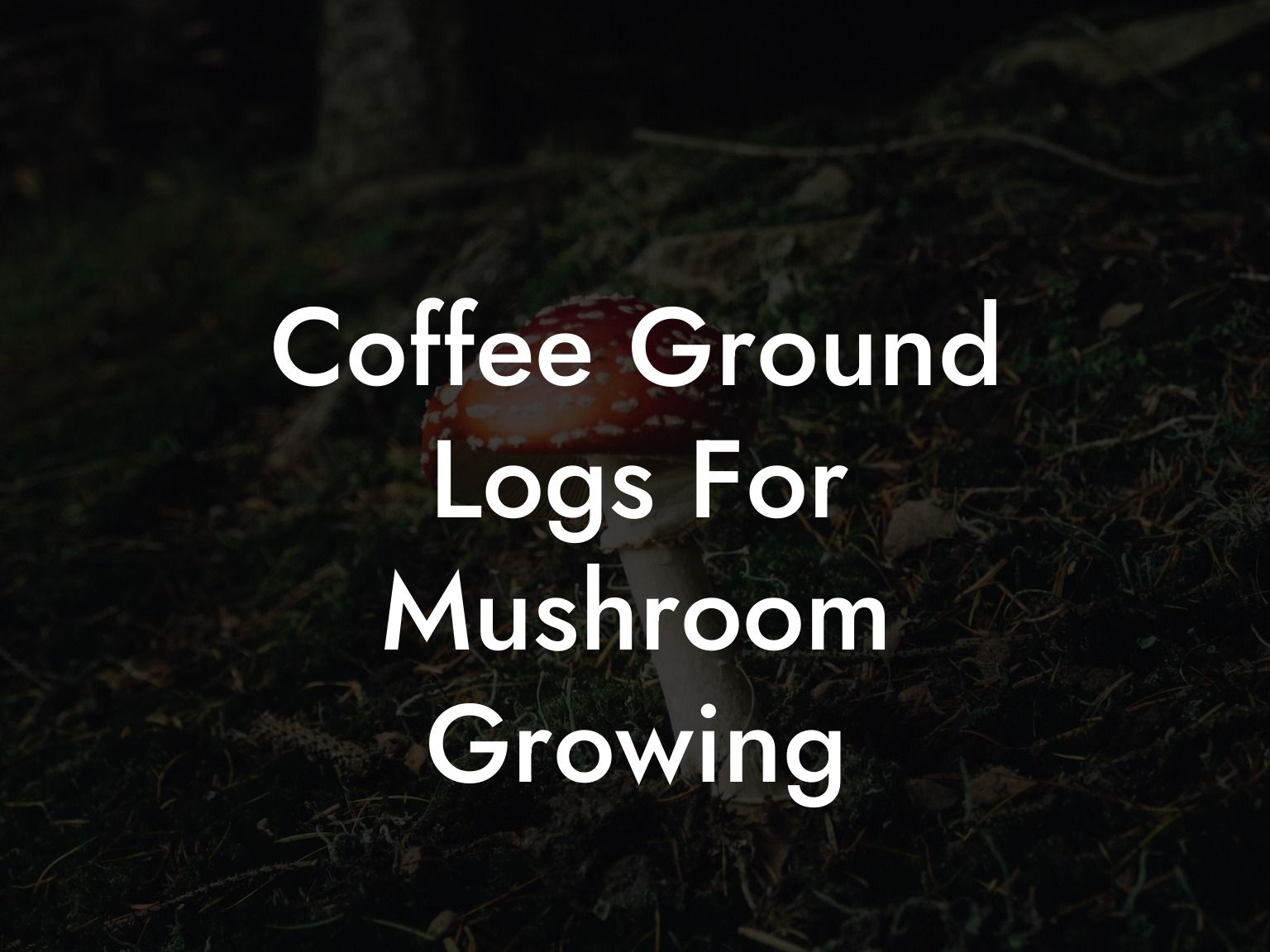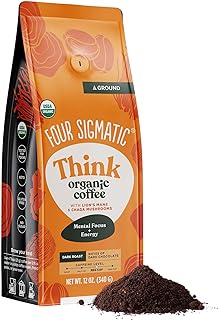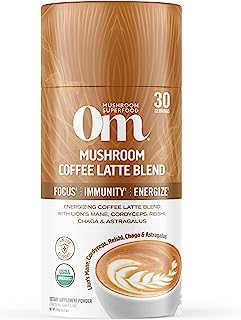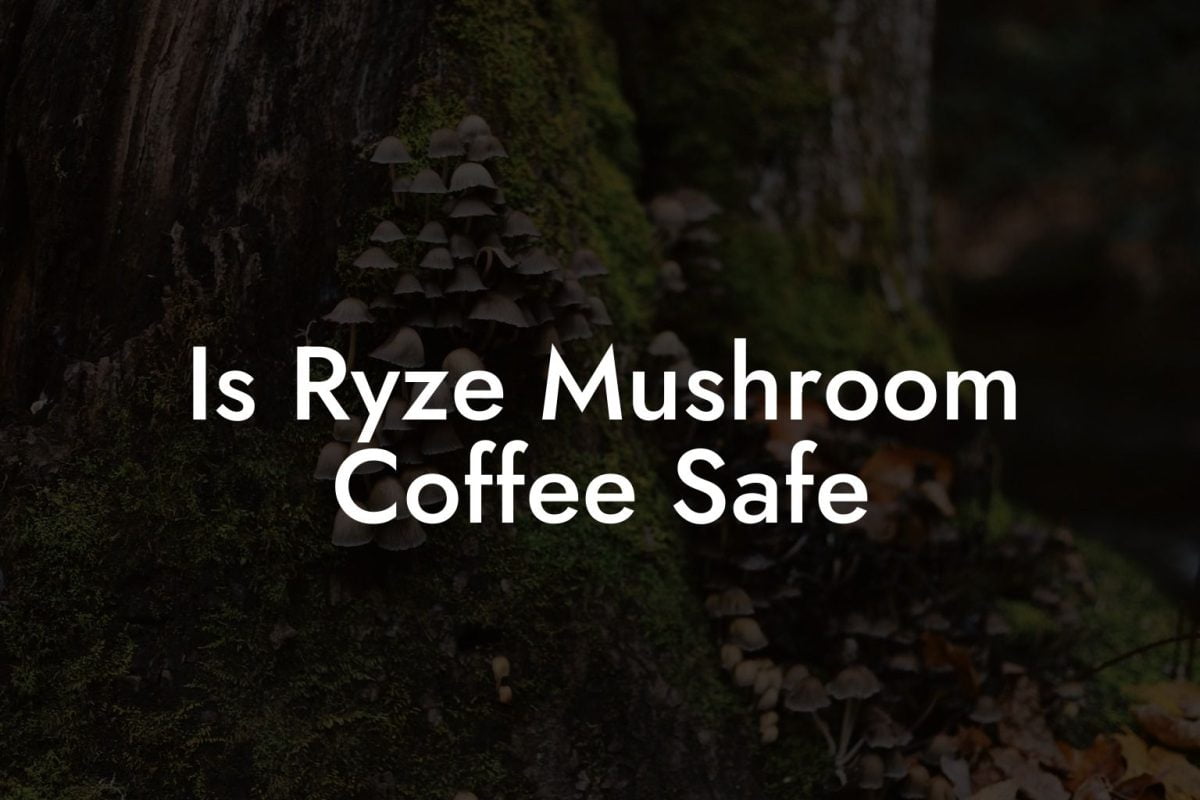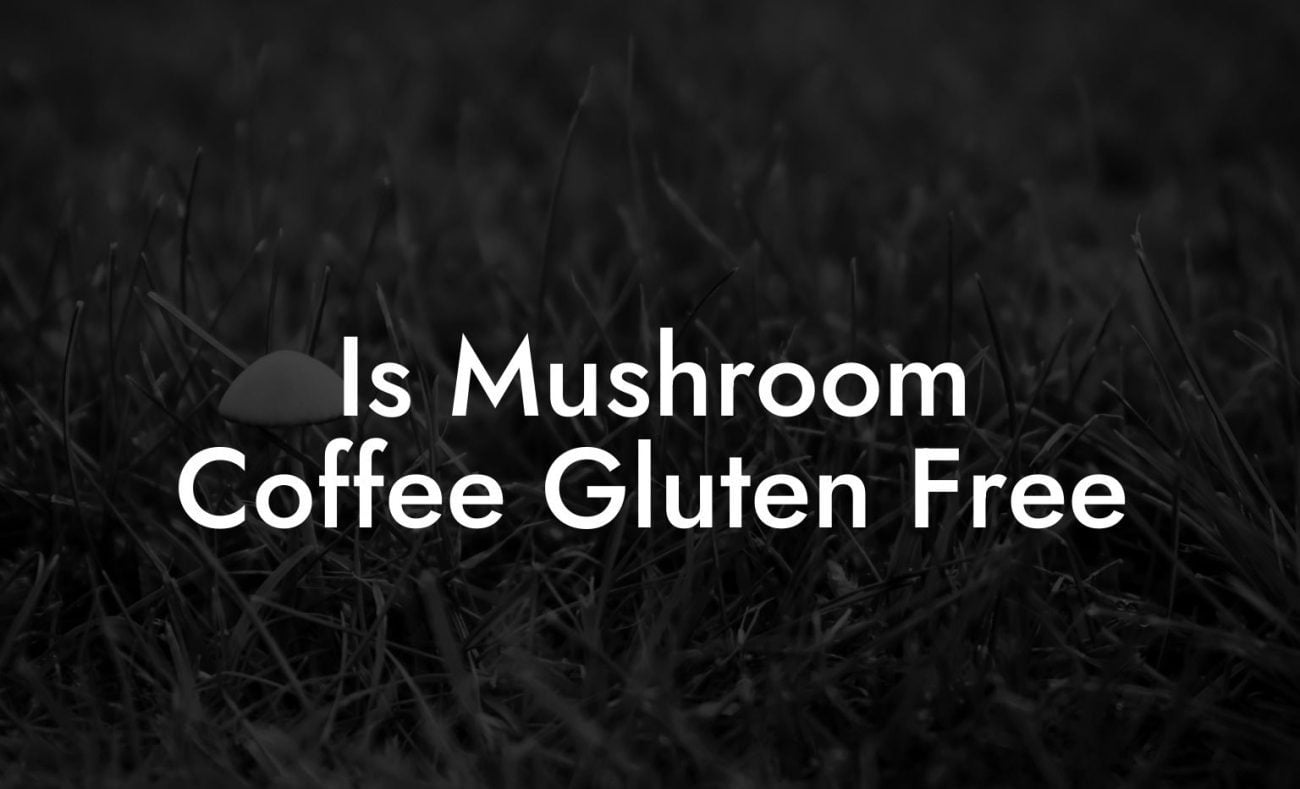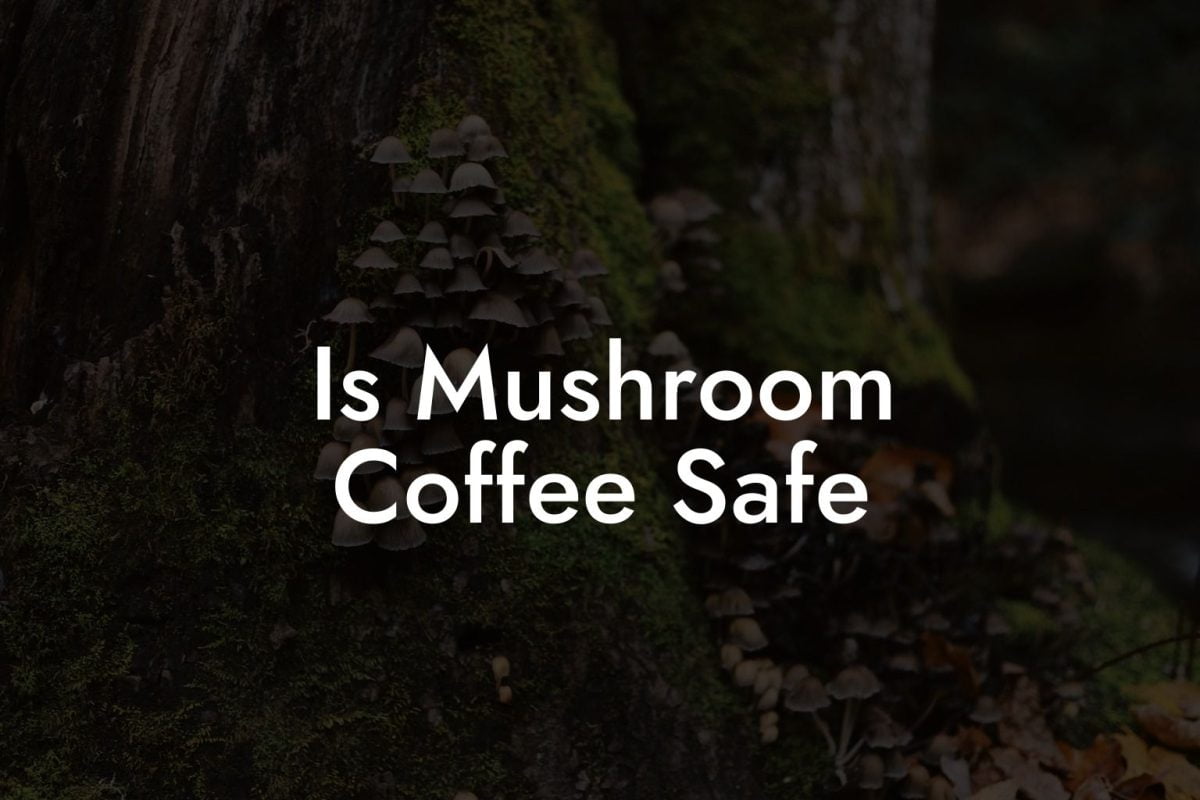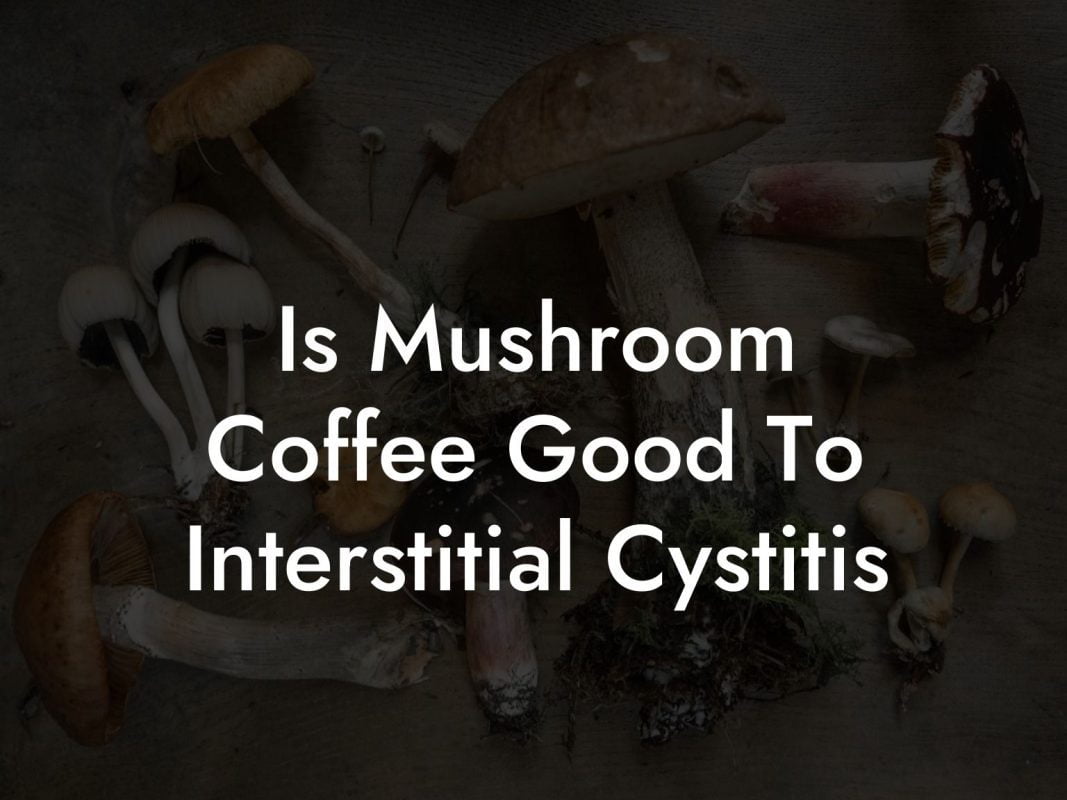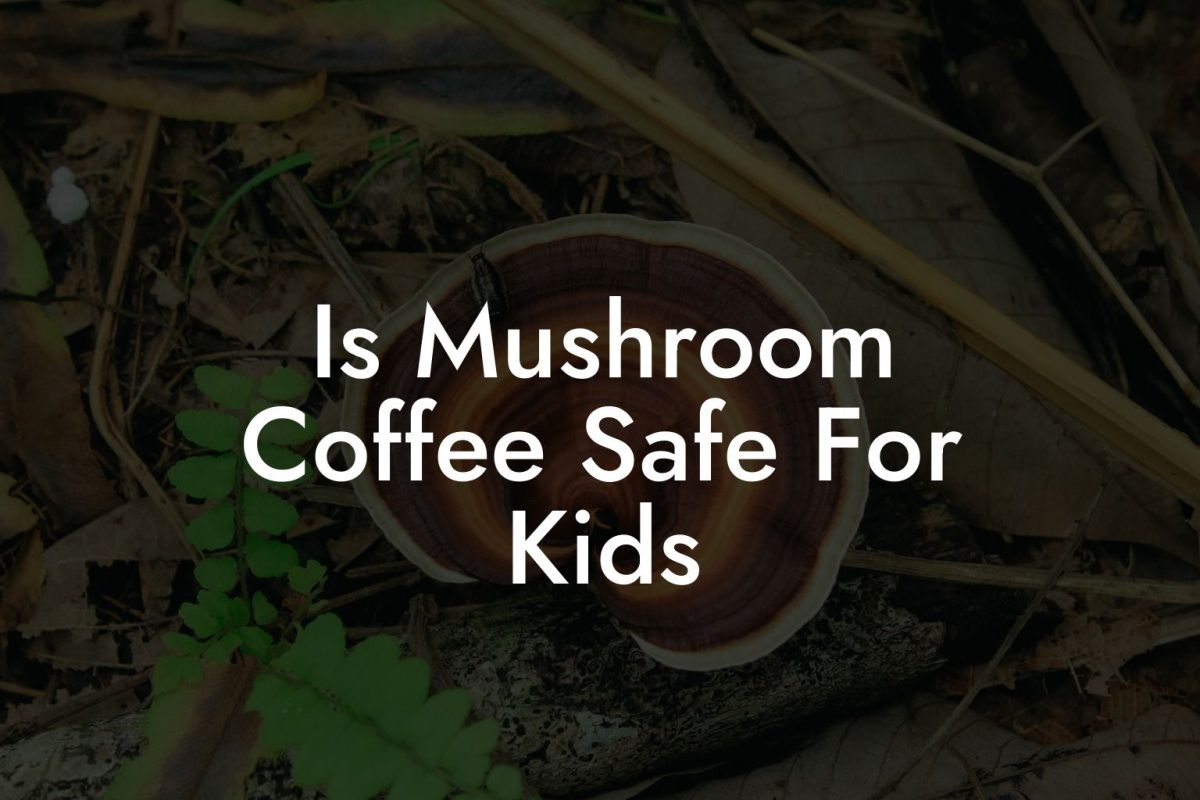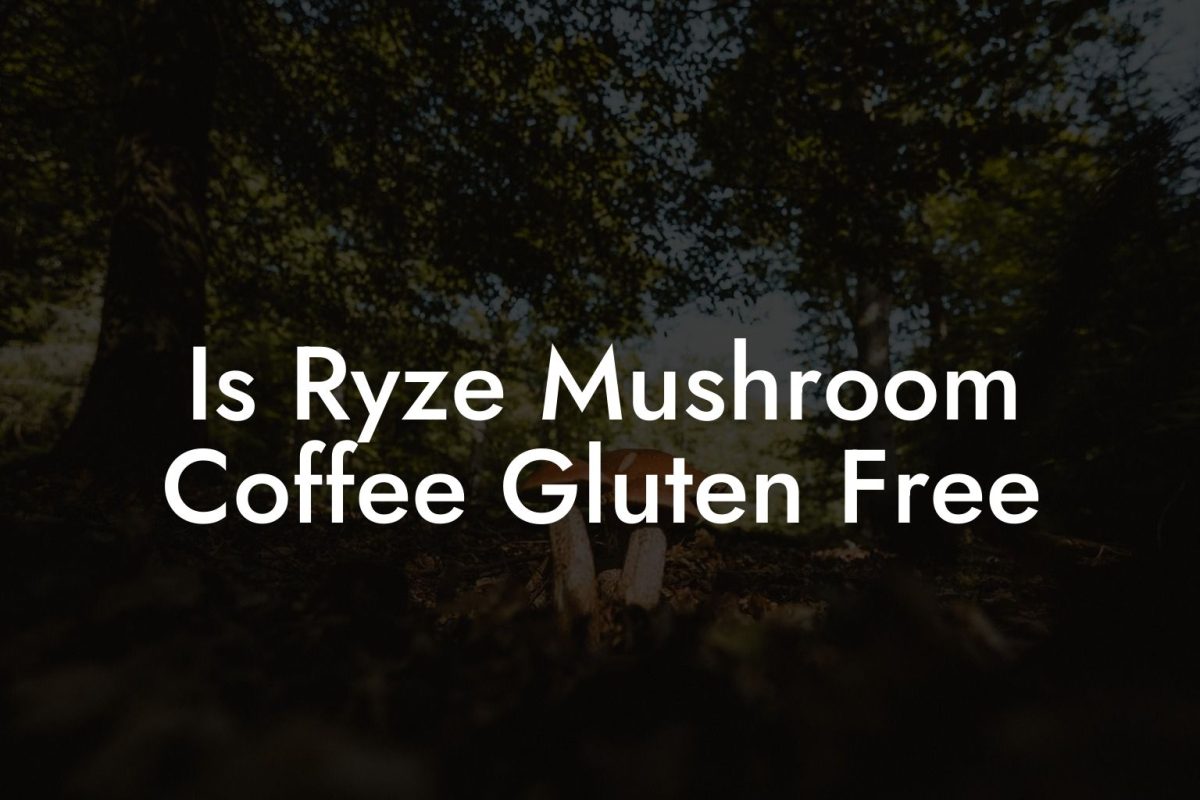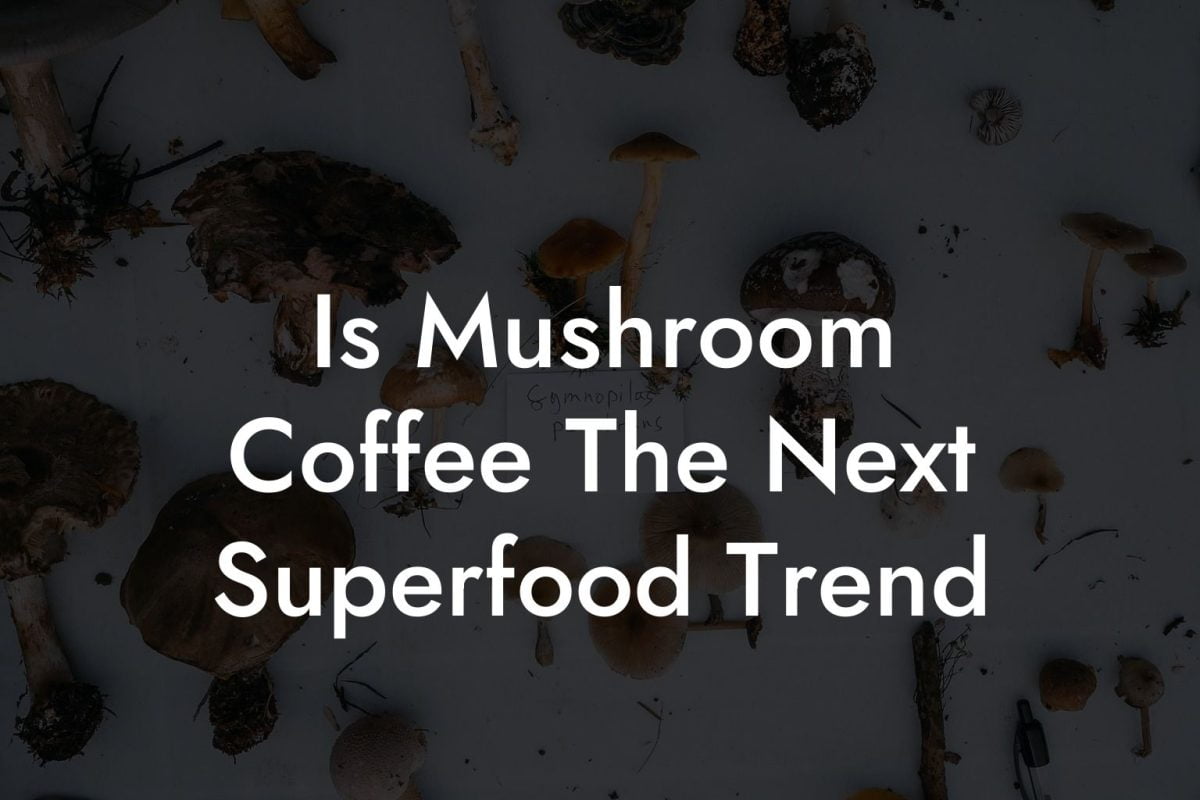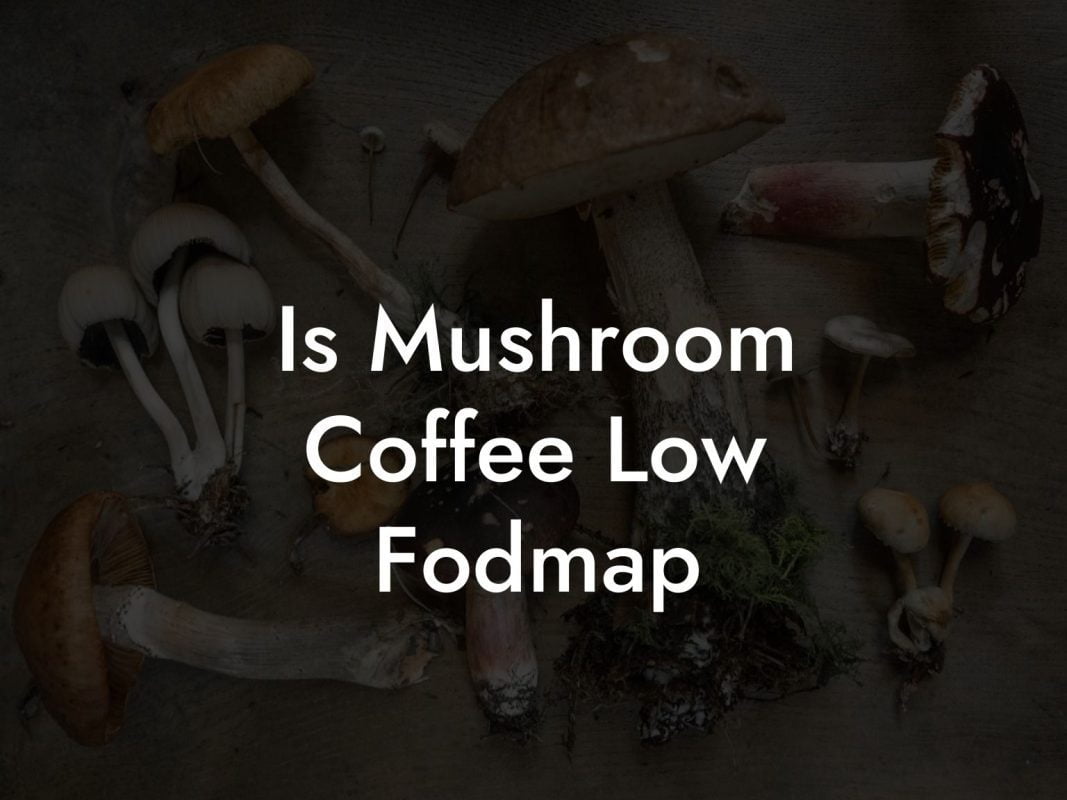Ever thought your messy coffee grounds could one day be the secret sauce to growing your very own gourmet mushrooms? If you’re nodding your head in amused disbelief, welcome to the wild, aromatic ride of coffee ground logs for mushroom growing, a space where sustainable ingenuity meets the ultimate Gen-Z DIY movement. Grab your reusable mug, and get ready to dive into a world where your morning caffeine fix transforms into the lush, earthy backbone of mushroom magic.
Quick Links to Useful Sections
- What Are Coffee Ground Logs For Mushroom Growing?
- The Benefits of Using Coffee Grounds for Mushroom Cultivation
- How Do Coffee Ground Logs Work in Mushroom Growing?
- DIY Guide: Building Your Own Coffee Ground Logs
- Step 1: Gather Your Materials
- Step 2: Prepare and Pasteurize Your Substrate
- Step 3: Inoculate with Mushroom Spawn
- Step 4: Monitor and Maintain the Humidity
- Integrating Coffee Ground Logs with Mushroom Coffee Production
- Troubleshooting Common Issues in Coffee Ground Mushroom Growing
- 1. Mold Invasions
- 2. Dry Logs
- 3. Slow or No Mycelium Growth
- Coffee Ground Logs vs. Traditional Substrates: Which Is Right for You?
- Innovative Techniques and Trends in Coffee Ground Mushroom Growing
- Hybrid Substrate Blends
- Smart Cultivation with Tech
- Community Innovations
- Resources and Community Support: Your Next Steps
- Delicious and Nutritious: From Mushroom Growth to Mushroom Coffee
- Frequently Asked Questions about Coffee Ground Logs for Mushroom Growing
- Your Journey to Sustainable and Flavorful Mushroom Growth
What Are Coffee Ground Logs For Mushroom Growing?
At its core, coffee ground logs for mushroom growing is the practice of repurposing used coffee grounds as an organic substrate, a "log" or bundle, that supports the growth and cultivation of your favorite fungi. Think of it as nature’s version of recycling, where yesterday’s latte leftovers become tomorrow’s dazzling mushroom metropolis. These logs combine the nutrient-rich matrix of coffee with other organic materials to create an ideal home for mycelium, the living, branching network that eventually produces mushrooms.
The concept might sound a bit out there, but coffee grounds add essential nutrients, moisture retention, and a mild acidity that many mushroom species thrive on. Plus, using coffee waste helps reduce landfill clutter and offers a sustainable way to support urban gardening. It’s eco-friendly, cost-effective, and perfect for those who believe that even your discarded brew has a story to tell.
The Benefits of Using Coffee Grounds for Mushroom Cultivation
Before you jump into your next brew thinking coffee grounds are just dirt, let’s break down the awesome benefits of this technique:
- Sustainability Explosion: By reusing coffee grounds that would otherwise end up in the trash, you’re not only nurturing your mushrooms but also sparing the planet a bit of waste. It’s a green win-win.
- Nutrient-Rich Substrate: Loaded with nitrogen, polysaccharides, and an assortment of micronutrients, coffee grounds provide the perfect modest feast for developing mycelium.
- Moisture Magnet: Their water retention properties ensure your mushroom logs stay damp and comfy, like a cozy blanket for fungi.
- Cost-Effective: Why buy expensive growing media when you can brew a fresh cup and use the leftovers? It keeps your mushroom-growing hobby inexpensive and resourceful.
- Urban Gardening Vibes: Perfect for small spaces, apartments, or garden nooks, this method brings the charm of sustainable farming right to your doorstep.
It’s not every day that you find a method that so seamlessly merges style, sustainability, and scientific ingenuity. Coffee ground logs are quickly becoming the must-have trend that every eco-warrior and food lover is buzzing about.
Looking For The Best Mushroom Coffee? You'll Love These:
How Do Coffee Ground Logs Work in Mushroom Growing?
Let’s unmask the secret behind these transformative logs. When you prepare coffee ground logs for mushroom growing, you’re essentially creating a hospitable environment for mycelium, the network of fungal threads that colonize the substrate. These coffee ground logs act as both a nutrient-dense food source and a structural habitat ideal for mushroom mycelium.
Here’s the lowdown:
- The Substrate: Coffee grounds contribute a fine texture and balanced pH, forming the bedrock of your mushroom log alongside other organic materials such as sawdust, straw, or even paper.
- Mycelium Colonization: Once you introduce the mushroom spawn (the fungal “seeds”) to your prepared log, the mycelium spreads out, breaking down the organic components. During this phase, the log becomes a nutrient hub, priming your fungi for fruiting.
- Mushroom Fruiting: As the mycelium matures, it eventually produces mushrooms, the fruiting bodies that emerge from the log. The resulting mushrooms not only look impressive but also boast an earthy flavor with hints of the coffee they grew on.
In short, your coffee ground log is like the hip apartment in the fungal world, where the coolest mycelium moves in and eventually throws a shroom party.
DIY Guide: Building Your Own Coffee Ground Logs
Ready to transform everyday coffee waste into a lush fungal habitat? Here’s a step-by-step guide to creating your very own coffee ground logs for mushroom growing. Roll up those sleeves, and let the DIY fun begin!
Step 1: Gather Your Materials
What do you need? The essentials include:
- Used coffee grounds (the fresher, the better, avoid moldy remnants).
- An additional substrate base, such as sawdust, straw, or even cardboard, to mix with the coffee grounds.
- Mushroom spawn of your choice. Popular species include oyster mushrooms and shiitake mushrooms.
- A large container or a clean tarp to mix and pasteurize your substrate.
- Gloves, spray bottle, and a spray mister for moisture control.
Bonus tip: Recycling coffee grounds from your favorite local coffee shop can add that authentic urban vibe to your project.
Step 2: Prepare and Pasteurize Your Substrate
To ensure your mushroom spawn has an uncontaminated environment to thrive, pasteurizing the substrate is crucial. Here’s how:
- Mixing It Up: Combine your used coffee grounds with the additional substrate in a 1:1 or 2:1 ratio, depending on moisture needs. The goal is to create a balanced blend with just the right moisture content.
- Pasteurization Process: You can steam your mixture or immerse it in hot water heated to around 160°F (71°C) for about 60 minutes. This step helps reduce the load of unwanted microbes.
- Drain and Cool: Once pasteurized, drain any excess water and allow the substrate to cool down to room temperature.
If you’re a DIY newbie, don’t worry, the pasteurization process is simpler than it sounds. Just think of it like giving your substrate a nice, warm spa treatment.
Step 3: Inoculate with Mushroom Spawn
Now comes the fun part: inoculating your coffee ground logs with mushroom spawn.
- Mix Carefully: Once your substrate is cooled, gently fold in the mushroom spawn. Ensure that the spawn is distributed evenly throughout the mixture. A light dusting or sprinkle might be all you need to get started.
- Pack into Logs: Shape the mixture into firm, log-like structures. You can use molds or even handmade cylinders to contain the substrate, all part of the DIY experience.
- Maintain Humidity: Place your logs in a dark, moist environment. Pro tip: cover them with a breathable cloth or place them in a humid, temperature-controlled closet until the mycelium starts to colonize.
The inoculation process is like setting the stage for an epic fungal performance, every little spore has a role to play.
Step 4: Monitor and Maintain the Humidity
This is where you become the overseer of your mushroom metropolis. Maintain a consistent humidity level by periodically misting your logs with water, ensuring they never dry out.
- Keep an eye on temperature and moisture, a few spritzes per day can keep the mycelium cozy without flooding the substrate.
- Watch for changes in color and texture; early signs of mushroom growth can offer a glimpse into the success of your logs.
- Adjust the environmental conditions as necessary, after all, even mushrooms appreciate a bit of pampering.
By now, your coffee ground logs should start showing signs of colonization. Trust the process, and enjoy the journey of watching life sprout from your repurposed brew.
Integrating Coffee Ground Logs with Mushroom Coffee Production
If the idea of a mushroom-tinted latte gets your heart racing, you’re not alone. The burgeoning trend of mushroom coffee isn’t just a mystical health elixir, it’s an adventure in innovative flavor combinations. Imagine sipping on your latte, knowing that those very same coffee grounds helped nourish a thriving fungal ecosystem.
This dual-purpose approach is particularly attractive to eco-conscious Millennials and Gen-Z enthusiasts who value sustainability along with a good buzz. Coffee ground logs serve a dual role: they clean up waste from your daily coffee fix while also providing the perfect bed for growing nutrient-packed mushrooms. The resulting mushrooms can even be used as ingredients to infuse your next batch of mushroom coffee, creating a full circle, ultra-sustainable cult classic.
By integrating these processes, you’re not just growing mushrooms, you're pioneering a lifestyle that champions resourcefulness, inventive culinary twists, and a deep respect for nature’s cycles.
Troubleshooting Common Issues in Coffee Ground Mushroom Growing
Even the most dedicated mycelium maestro faces hurdles along the way. Here are some troubleshooting tips to keep your coffee ground logs thriving:
1. Mold Invasions
Mold can be a major buzzkill. If you notice fuzzy growth that isn’t your desired mushroom spawn, it might be a contaminant. To combat this:
- Ensure proper pasteurization of your substrate.
- Maintain the right moisture levels, too much moisture creates a breeding ground for unwanted molds.
- Improve air circulation around your logs while keeping the environment humid.
Remember, a little vigilance now can save hours of scrubbing later.
2. Dry Logs
If your logs start looking more like crispy coffee grounds than a damp mushroom incubator, they’re drying out. Fix this by:
- Increasing the frequency of misting.
- Covering the logs with breathable plastic wrap to maintain humidity.
- Ensuring your growing space remains at an optimal humidity level (around 80-90%).
It’s all about that perfect rainy day vibe, mushrooms love a little drizzle!
3. Slow or No Mycelium Growth
When your log seems to be taking forever to colonize, don’t worry. Here’s what to check:
- Temperature: Make sure you’re maintaining a stable environment (usually between 65°F to 75°F).
- Spawn Quality: Fresh, high-quality spawn is key. If your spawn is old or poorly stored, it might compromise the process.
- Substrate Balance: Too many coffee grounds can lower the pH excessively. Mix in additional substrates like sawdust or straw to balance it out.
Troubleshooting is part of the journey, each problem solved is a lesson learned in the magical world of mushroom growth.
Coffee Ground Logs vs. Traditional Substrates: Which Is Right for You?
Anybody who’s ever embarked on a DIY project knows that there’s always a debate about the "right" materials. When it comes to cultivating mushrooms, the choice between coffee ground logs and traditional substrates like straw, hardwood sawdust, or even coco coir is no different.
Pros of Coffee Ground Logs:
- Eco-Friendly Charm: They repurpose waste and reduce your carbon footprint.
- Nutrient Boost: Coffee grounds infuse extra nitrogen and organic compounds, providing a richer nutrient profile.
- Cost-Effective: Utilizing free or low-cost coffee waste can make your cultivation process more economical.
Pros of Traditional Substrates:
- Proven Track Record: Many mushrooms have been grown successfully on conventional substrates for decades.
- Consistency: Traditional substrates often have reliably consistent moisture and nutrient retention properties.
- Availability: Materials like sawdust and straw are widely available, especially in rural areas.
The best approach? Experiment! Combining coffee grounds with traditional substrates can give you the best of both worlds, creating a hybrid substrate that’s nutrient-rich, environmentally friendly, and extremely effective at fostering robust mushroom growth.
Innovative Techniques and Trends in Coffee Ground Mushroom Growing
As with any trending DIY movement, innovative techniques in coffee ground mushroom growing are constantly evolving. From urban farmers to biohackers, creators are finding new ways to refine and optimize the process.
Hybrid Substrate Blends
Some pioneers are mixing coffee grounds with unconventional materials like biochar, compost, or even recycled paper. These hybrid blends can further improve the nutrient balance and water retention properties of your logs, making them even more conducive to hearty mycelium growth.
Smart Cultivation with Tech
Why not bring your mushroom growing into the modern age? Smart sensors, automated misting systems, and even smartphone apps for monitoring humidity and temperature are making it easier than ever to keep your logs in peak condition. Imagine getting a notification on your phone telling you, “Your mushrooms just hit optimal growth conditions, time for a celebratory latte!”
Community Innovations
Online communities and local workshops are a treasure trove of experiments, tips, and modifications. Platforms like Reddit, Instagram, and TikTok are buzzing with creative ways to integrate coffee ground logs into urban mushroom farms. Sharing your progress not only helps others learn but also keeps you motivated as part of a global movement.
If you love being on the cutting edge, exploring these innovative techniques will keep your mushroom growing game as fresh and bold as your morning espresso.
Resources and Community Support: Your Next Steps
Whether you’re a first-timer or a seasoned shroom enthusiast, surrounding yourself with the right resources can make all the difference. The mushroom growing community is vast, friendly, and ever-evolving. Here are some top resources and next steps to help you level up your coffee ground log project:
- Online Forums and Social Media Groups: Check out Reddit’s r/MushroomGrowing, Facebook groups, and Instagram hashtags like #MushroomDIY and #CoffeeGroundLogs for daily inspiration, troubleshooting tips, and success stories.
- Local Workshops and Classes: Many urban farming co-ops and community centers offer hands-on classes on mushroom cultivation, often featuring sustainable practices like using coffee grounds.
- Books and e-Guides: From comprehensive guides to niche blog posts, a wealth of knowledge is available for those who want to dive deep into the science and art behind substrate blending and mycelium growth.
- YouTube Channels: Visual learners can benefit from countless video tutorials that demonstrate step-by-step processes, from pasteurizing your substrate to watching your logs colonize.
- Local Coffee Shops: Believe it or not, forging a relationship with your neighborhood café can be a game-changer. Many are happy to donate their used coffee grounds, and you might even score insider tips on the best blends for mushroom cultivation.
Being part of a community not only boosts your confidence but also connects you with a diverse group of enthusiasts who share your passion for sustainable, innovative growing techniques. Jump in, ask questions, and share your progress, every little tip could be the secret ingredient to your next successful mushroom harvest.
Delicious and Nutritious: From Mushroom Growth to Mushroom Coffee
Now that your coffee ground logs are hard at work, cultivating flavorful mushrooms, it's time to bridge the gap between mushroom growing and the world of mushroom coffee, a trend that’s as intriguing as it is nutritious. Think of mushroom coffee as the perfect marriage of nature’s bounty: robust coffee flavor elevated by the earthy, medicinal qualities of mushrooms.
Popular species like lion’s mane and chaga not only provide a unique flavor profile but also boast potential health benefits such as improved focus, reduced inflammation, and enhanced immunity. Blending these mushrooms into your coffee can turn your morning ritual into a holistic, energy-boosting experience. Imagine sipping on a cup of java that energizes your body while nourishing your brain, a true power move for that busy, creative lifestyle.
As you experiment with crafting your own blends, remember that the quality of your mushroom substrate (thanks to your eco-friendly coffee ground logs) directly impacts the flavor and potency of your final brew. It’s a full-circle process where sustainability meets culinary innovation.
Frequently Asked Questions about Coffee Ground Logs for Mushroom Growing
We know you’ve got questions, and we’re here to spill the beans, er, grounds, on the most common queries surrounding this sustainable mushroom growing method.
1. What exactly are coffee ground logs?
Coffee ground logs are organic substrates made primarily from used coffee grounds mixed with other materials like sawdust or straw. They serve as a nutrient-rich medium for mycelium colonization and subsequent mushroom fruiting.
2. Are coffee grounds really good for growing mushrooms?
Absolutely! Coffee grounds provide essential nutrients, help maintain moisture, and contribute a slightly acidic pH, ideal conditions for many mushroom species.
3. Do I need to pasteurize the coffee grounds before use?
Yes, pasteurizing your coffee grounds (or substrate mix) is crucial to eliminate unwanted microbes, ensuring your mushroom spawn can thrive without competition.
4. What types of mushrooms grow best on coffee ground logs?
Oyster mushrooms and shiitake mushrooms are popular choices, though experimental growers have reported success with lion’s mane, reishi, and even medicinal varieties. The key is the right environmental conditions.
5. How do I maintain the proper humidity for my logs?
Regular misting, using a humidifier, and maintaining a sheltered environment help keep your logs at optimal moisture levels for mycelium growth.
6. Can I combine coffee grounds with other substrates?
Definitely. Many growers mix coffee grounds with sawdust, straw, or other organic fibers to balance moisture and nutrients, leading to better colonization.
7. Is mushroom coffee made from these mushrooms beneficial?
Yes, mushroom coffee is known for its potential cognitive and immune benefits. It offers an alternative to traditional coffee by infusing it with compounds found in medicinal mushrooms.
8. How long does colonization take?
The colonization period can vary depending on the species and environmental conditions, generally taking anywhere from 2 to 4 weeks before visible mushroom fruiting begins.
9. Are there any risks of using coffee ground logs?
When properly pasteurized and maintained, coffee ground logs are safe. However, improper preparation can lead to contamination, so best practices are key.
10. Where can I find more resources on this topic?
Online communities, specialized workshops, and DIY guides are the best places to start. Engage with fellow enthusiasts on social media platforms and forums to stay updated with the latest trends.
Your Journey to Sustainable and Flavorful Mushroom Growth
Whether you’re starting with a simple cup of coffee or embarking on a full-blown urban farming adventure, embracing coffee ground logs for mushroom growing is a journey marked by innovation, sustainability, and plenty of hands-on fun. Each step, from pasteurizing your substrate and inoculating your logs to troubleshooting unexpected issues, represents a bold stride toward a greener, more resourceful lifestyle.
This method not only taps into the exciting world of mushroom cultivation but also redefines what it means to be sustainable in today’s busy, eco-conscious society. You’re not just reusing coffee grounds; you’re breathing new life into waste, transforming it into nutritious, flavorful mushrooms that can even elevate your coffee ritual into an all-natural, fortified beverage.
Embrace every part of the process with creativity and confidence. Share your successes and missteps with fellow enthusiasts, experiment with different substrate mixes, and maybe even discover your signature mushroom coffee that’s as unique and bold as you are. Remember, the journey is just as delicious as the destination.
So, here’s to a future where every cup of coffee sparks the growth of a lush, mushroom-filled ecosystem, a future where sustainability, innovation, and a bit of DIY magic converge in one unforgettable experience. Welcome to the green side of your morning ritual!
Looking For The Best Mushroom Coffee? You'll Love These:
Useful Interruption: Dive deeper into the world of Mushroom Coffee with our most popular sections. If there is anything you think is missing or anything you would love for us to write about, just give us a shout.
- Mushroom Coffee Equipment & Product Reviews
- Mushroom Coffee Recipes & Creative Variations
- Mushroom Coffee Guides & Troubleshooting
- Mushroom Coffee Brewing & Preparation Techniques
- Model Rocket Advanced Rocketry & Innovations
- Mushroom Coffee Fundamentals
- Model Rocket Equipment Reviews & Digital Tools
- Mushroom Coffee Health Benefits & Wellness
- Mushroom Coffee Mycology & Scientific Insights
- Mushroom Coffee Community, Lifestyle & Engagement
I tried mushroom coffee this morning and told my friend, "This brew is spore-tacular!" He shot back, "Guess that's why it's such a cap-tivating way to kickstart your day!"

